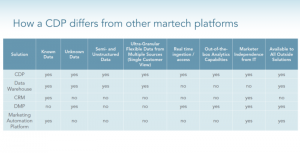If you’ve made the strategic decision to steer your company towards rapid growth you’ve most likely adopted those characteristics that are commonly found in exponential organizations. What you and your talent are now focusing on is realizing the company’s massive transformative purpose while relying on useful information and being innovative and customer centered. That’s great, but are you certain that each individual within your organization has subscribed to this plan? Are you able to align your talent to the rapid growth that’s to come?
Taking a look at all the innovation that’s occurring around us and the disruptions that keep surfacing we now understand that our business model has to change. And you’re gearing your organization towards just that. The same transformation is similarly necessary when you consider aligning individuals within your organization to a massive purpose and how you track their performance. There’s much innovation needed in the area of performance management which is fast losing its relevance and utility. You could say it’s becoming obsolete, particularly as new startups are challenging every aspect of running a business. Though, the Italy based global consultancy firm Business Integration Partners has found that the traditional performance review systems still prevail in many Silicon Valley companies.
The Troubling Performance Management Systems
It’s fair to say that the traditional performance management system where employees are rated annually against their goals and objectives isn’t serving the purpose it was conceived to. There’s much demotivation and bias around the process and it’s not accurately able to align itself with the fast growing and constantly evolving strategies of an exponential organization. Another significant concern about the current systems is how it’s delayed in recognizing the accomplishments of high achievers. This particular group has vastly agitated by the closed-minded approach of performance management systems leading to frustration, boredom and increasing threat to companies of losing them.
As a fast growing organization, your top talent is important to you. When there’s so much at stake and so much to achieve you simply can’t afford to lose your top employees. And that’s why a change in your approach to managing performance is highly warranted.
Performance Management Evolved
In your pursuit for exponential growth an imperative strategic choice to make is how you monitor and assess performance. To address this, Intel’s CEO Andy Grove developed the Objectives and Key Results (OKR) method which was later adopted and popularized by Google. The idea is to track individual, team and company goals and outcomes transparently and in a way that’s closely aligned to the organization’s purpose. To achieve this, the OKR method asks individuals (or teams and companies) two basic questions:
- Where do I want to go? (Objectives)
- How will I know I’m getting there? (Key Results)
The basic idea of OKRs is to consider two main aspects of performance – focus on the goal (objectives) and how to achieve them (the key results that’ll ensure progress is being made). The objective could be to “increase market share by 15%” which would require you to “form 2 new strategic partnerships” and “develop 3 new product lines” (the desired key results). Here are some more examples of OKRs that you could find useful.
Unlike the traditional performance management systems which hamper progress with their complex and secret processes and focus on the broader goals, OKRs are more targeted. OKRs provide organizations and individuals the opportunity to focus on what’s important and critical for the business in a simplified manner with swifter feedback cycles and transparency. What transpires is a process that allows visibility of what the goal is, how it’s being achieved and what improvements are needed to stay on course.
As an aspiring or current exponential organization the OKR method is probably your best chance to align your talent to your massive purpose (and your ultimate success). In fact some exponential organizations have been so convinced by the results that they’ve implemented high-frequency OKRs that tracks weekly, monthly or quarterly targets for each individual and team within the organization.
Getting It Right
Giving serious consideration to dishing out the old performance management system for an OKR method is definitely in line with your aspiration to be an exponential organization. Particularly because your top talent – the heart and soul of your company’s ability to be innovative – demands that their performance be gauged fairly, transparently and accurately. So when developing OKRs keep these characteristics in mind:
- Objectives are qualitative and Key Results are quantitative.
- Your vision is defined by your objectives.
- Key Results are the measurements of the incremental progress you make towards your objective.
- The objectives you lay out should be bold, ambitious and beyond your comfort-zone.
- OKRs are determined bottom-up unlike KPIs which are top-down.
- OKRs are not performance evaluations. Performance evaluations gauge how an employee performed in a specified period and are independent of OKRs. OKRs, however, are about company goals and each employee’s contributions towards those goals.
While in theory many organizations have raised concerns over the effectiveness of their present performance management and evaluation methods, the absorption of the OKR program still remains to be a slow process. There could be several reasons for that which I’ll not get into. But one thing’s for sure, if you truly want to align your talent to your core purpose and ultimately your growth, you’ll need to take a hard look at your internal processes – particularly those that are acting as roadblocks for your top talent to truly tap into their full potential.
Business & Finance Articles on Business 2 Community(36)
Report Post




